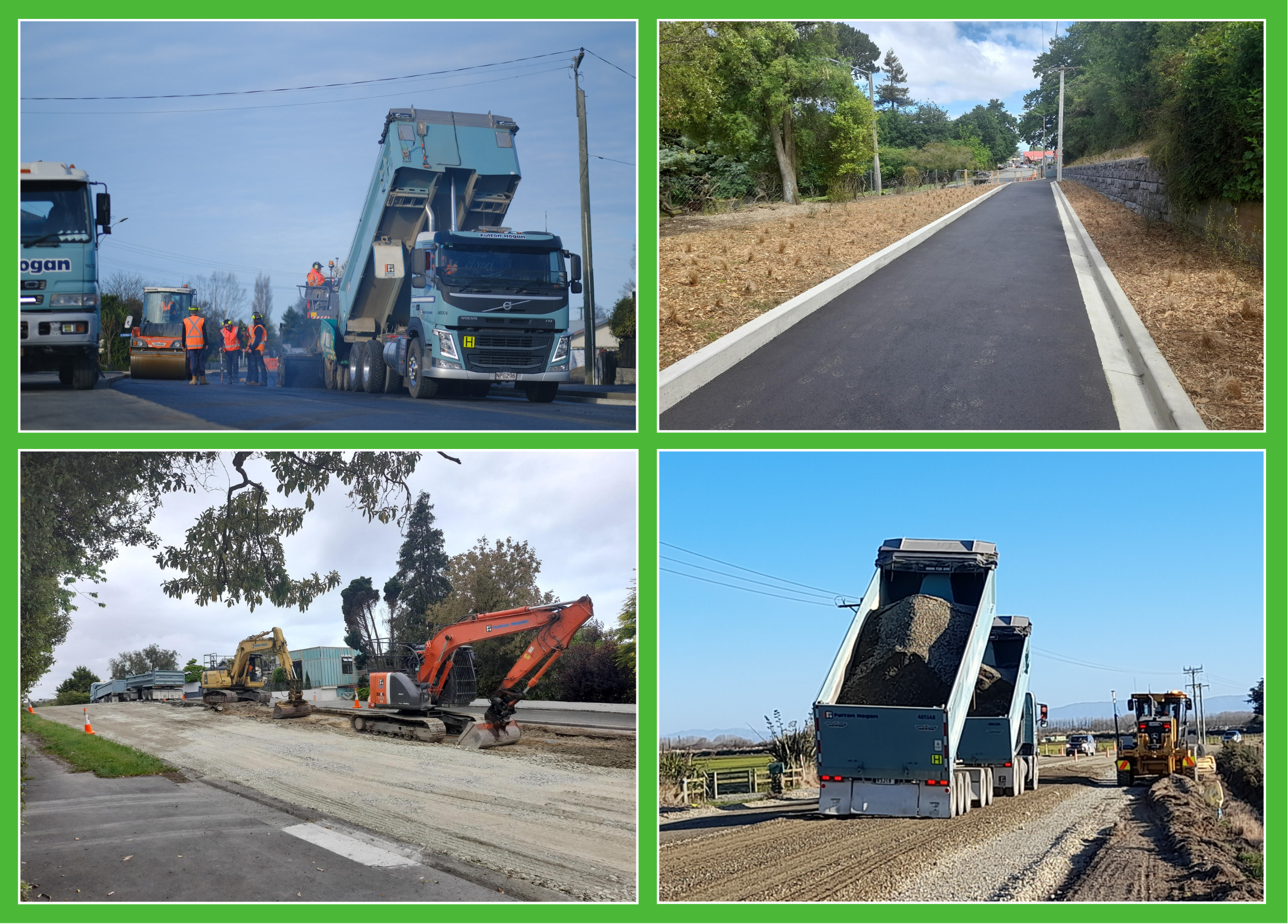You can view our forward work programme by using the map below.
How to use the map:
- Click the top left button that looks like these symbols >>
- To search your address, type it into the top right search area, it will load options as you type.
- To identify the type of work taking place, click the coloured shape and information will pop-up!
- To zoom in and out, use the + and - buttons on the top left
How to use the map:
- Click the top left button that looks like these symbols >>
- To search your address, type it into the top right search area, it will load options as you type.
- To identify the type of work taking place, click the coloured shape and information will pop-up!
- To zoom in and out, use the + and - buttons on the top left
The types of work we do & why

Road Resurfacing:
Resurfacing or sometimes referred to is resealing, is a simple maintenance technique in which a new layer of material is laid over the existing surface instead of replacing the entire road. Kind of like giving your house a new coat of paint, it will protect the road structure from moisture and help extend the life of the material. Like paint, the seal breaks down over time and starts to let water in and a reseal is required again.
Prior to resurfacing, your street may undergo several different works to improve the faults and drainage that are present to ensure maximum efficiency.
Road Reconstruction:
Reconstruction is like stripping off the weatherboards and replacing them, before painting the house.
This work is more extensive and can be done one of two ways; either building up the road on top of the existing surface or if the damage is on a larger scale, digging up and removing the existing material. Road reconstruction is only done when the cost of future repairs to the road is higher than reconstructing it.
Within two years of reconstruction, there will be further resurfacing, to ensure the new material is protected by adequate waterproofing.
Road Seal Widening:
This is a widening or an extension of the width of the road.
Several roads are now too narrow to meet the current traffic conditions required. When these roads do not qualify for a full reconstruction, extra width is added to the side of the existing road to accommodate the increase in traffic.
Footpath Reconstruction:
This process involves removing the existing footpath surface and then the preparation of the base for a new surface.
Prior to a footpath reconstruction, Council may contact you about any non-compliant vehicle crossing (driveway) to your property and offer to work with you to make your vehicle crossing comply with Council’s standards and specifications.
Kerb and Channel Reconstruction:
This involves removing and replacing the existing kerb and channel.
Changes to road widths, alignment and traffic calming measures (road safety) may be done in conjunction with this reconstruction.
Roadside Drainage:
This is normally known as drainage works or surface water channel construction. The reasons for undertaking roadside drainage works are:
- Roadside drainage is necessary to draw water away from the road. Water in a pavement is the leading cause of failure (e.g. large unsafe potholes).
- Roadside drainage is an important component of pre-reseal repairs. If poor drainage is observed, then usually there are a number of early failures, not visible to the untrained eye. If these are left and drainage is not done, then potholes grow in size and scale to cause an unsafe surface.
- If drainage is not completed then eventually a costly road rehabilitation will be required. This is not a good use of ratepayer or taxpayer money.
- Works are generally undertaken shortly before resurfacing on the rural network. Timing is scheduled such that we undertake the drainage works before pavement repairs. Generally the repairs need some months to settle and then resurfacing will be undertaken to keep the road waterproof and maximise its life.
Creating the surface water channels is standard maintenance practice for rural roads and the specification for construction is covered under the Council’s general maintenance contract, which is an accepted and well used national practice.
To create a surface water channel on our rural network a digger will remove grass and vegetation while digging on a shallow angle to create the channel. During construction, the berm may be left with clumps of soil and vegetation, which will be smoothed out when construction is completed.
While construction occurs, it may create some inconvenience for landowners that choose to maintain Council owned grass berms. Timaru District Council appreciates the patience and cooperation of landowners in the District – this cooperation helps support financial and safety benefits for our community.
Last updated: 16 May 2025